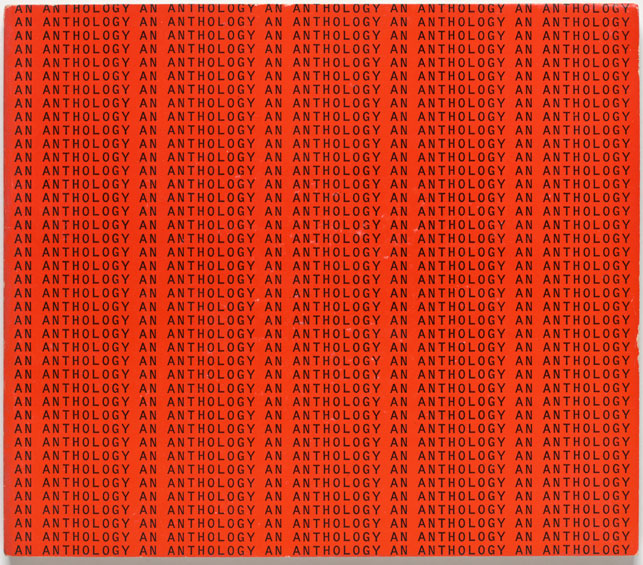De Stijl magazine (1917-1921) [Dutch]
Filed under magazine | Tags: · architecture, art, art criticism, art theory, avant-garde, de stijl, literature, neoplasticism, painting, poetry

De Stijl, Dutch for “The Style”, also known as neoplasticism, was a Dutch artistic movement founded in 1917. In a narrower sense, the term De Stijl is used to refer to a body of work from 1917 to 1931 founded in the Netherlands. De Stijl is also the name of a journal that was published by the Dutch painter, designer, writer, and critic Theo van Doesburg (1883–1931), propagating the group’s theories. Though the magazine never sold more than 300 copies, it had a strong influence on art in the Netherlands and abroad.
De Stijl: Maanblad gewijd aan de moderne beeldende vakken en kultuur
Edited by Theo van Doesburg
Published in Delft (1917-18) and Leiden (1918-21)
La Monte Young, Jackson Mac Law (eds.): An Anthology of Chance Operations (1963)
Filed under artist publishing | Tags: · art, avant-garde, conceptual art, fluxus, music, poetry

A source-book of early Fluxus classics. A collection of scores, poetry, dance constructions, and other avant-garde work. Includes Henry Flynt’s first essay on concept art.
When the poet Chester Anderson, publisher of Beatitude, exited New York for California in 1959, he asked La Monte Young to edit Beatitude East, composed from the performance scores Young had collected in Berkeley and New York. In this he was aided by Jackson Mac Low, who had attended Cage’s composition course at the New School for Social Research and worked at the Living Theater with Julian Beck and Judith Malina.
Mac Low and Young provided Maciunas with connections to “beat” ideology, encouraging him not only to present radical programming at AG Gallery, but to design An Anthology, and to organize the initial 1962 Fluxus Festival in Wiesbaden, Germany. All of this was contemporaneous.
Maciunas supplied the paper, design and some money for the publishing of An Anthology, according to Henry Flynt, and had it ready for printing by October 1961. It was finally published by Young and Mac Low in 1963 as:
AN ANTHOLOGY of chance operations concept art anti-art indeterminacy improvisation meaningless work natural disasters plans of action stories diagrams Music poetry essays dance constructions mathematics compositions, BY GEORGE BRECHT, CLAUS BREMER, EARLE BROWN, JOSEPH BYRD, JOHN CAGE, DAVID DEGENER, WALTER DE MARIA, HENRY FLYNT, YOKO ONO, DICK HIGGINS, TOSHI ICHIYANAGI, TERRY JENNINGS, DENNIS, DING DONG, RAY JOHNSON, JACKSON MAC LOW, RICHARD MAXFIELD, ROBERT MORRIS, SIMONE MORRIS, NAM JUNE PAIK, TERRY RILEY, DITER ROT, JAMES WARING, EMMETT WILLIAMS, CHRISTIAN WOLFF, LA MONTE YOUNG/LA MONTE YOUNG – EDITOR/GEORGE MACIUNAS – DESIGNER.
The first edition (it was reprinted in 1972 by Hundermark, Germany) contains 67 leaves and three inserts. It includes multicolored and onionskin paper, card stock and two envelopes. The text was printed in offset with a heavy paper cover, collated manually with a staple and perfect binding.
Self-published, New York, Spring 1963
Layout by George Maciunas
120 pages
PDF (36 MB, updated on 2012-7-9)
Comment (1)Blast: Review of the Great English Vortex, 1-2 (1914-1915)
Filed under magazine | Tags: · 1910s, art, avant-garde, literature, poetry, united kingdom, vorticism

Issue 1, 20 June 1914

Issue 2, July 1915
“Blast was a modernist magazine founded by Wyndham Lewis with the assistance of Ezra Pound. It ran for just two issues, published in 1914 and 1915. The First World War killed it—along with some of its key contributors. Blast’s purpose was to promote a new movement in literature and visual art, christened “Vorticism” by Pound and Lewis. Unlike its immediate predecessors and rivals, Vorticism was English, rather than French or Italian, but its dogmas emerged from Imagism in literature and Cubism plus Futurism in the visual arts. The first issue of Blast includes artwork by Lewis, Gaudier-Brzeska, and others, along with a manifesto for Vorticism and lists of blasts, blesses, and curses of a whole range of people, concepts, and movements. It also includes a play by Lewis and fiction by Ford Madox Hueffer and Rebecca West. The second issue includes a notice of Gaudier-Brzeska’s death in France. Despite its short life, Blast was a powerful influence in the shaping and promoting of modernism.” (Source)
Edited by Wyndham Lewis
Publisher John Lane, the Bodley Head, London
via Modernist Journals Project

